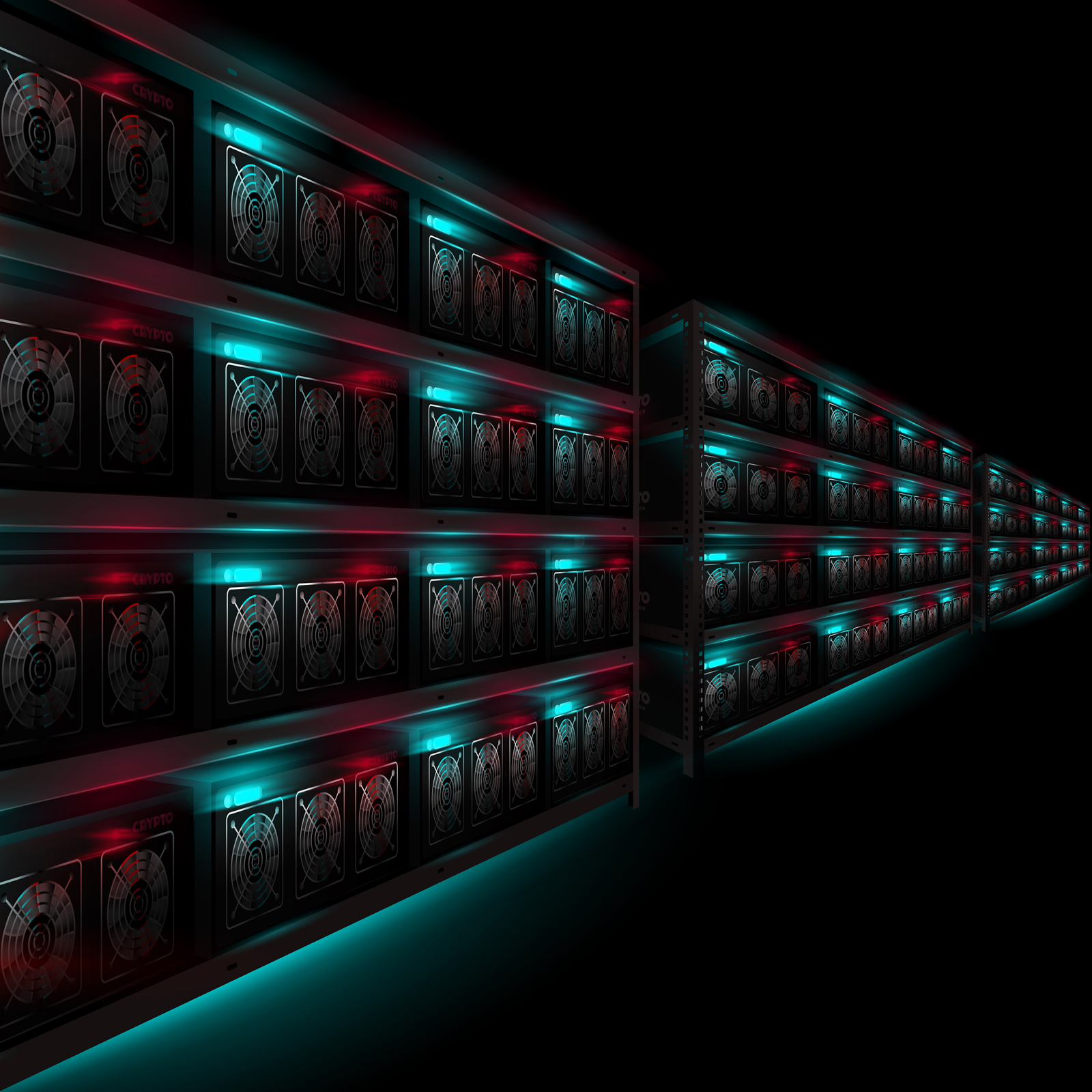
Over the last year, SHA-256 mining, the process that’s used to find blocks on both the Bitcoin Cash (BCH) and Bitcoin Core (BTC) networks, alongside a slew of other cryptocurrencies, has grown exponentially. Digital asset trading markets have been in a slump over the last eight months of 2018, but the bearish sentiment has not affected the hashpower behind these cryptocurrencies and, in fact, it has increased aggressively.
Also Read: Bitmain Offers Wi-Fi Routers Mining Cryptocurrencies
The SHA-256 Mining Hashrate Has Grown Considerably Large Over the Last Year
The SHA-256 mining algorithm and other mining operations involve the process of computing devices verifying and compiling recent blockchain transactions, alongside solving computational problems in order to find a block. Miners who find a block are awarded freshly minted cryptocurrencies and all the fees associated with the transactions in the block. This incentivized system has grown significantly competitive which in turn has innovated both semiconductor production and a significant advancement in Exascale computing. Over the last few months, cryptocurrency markets have been bearish and prices have dropped considerably since the end of 2017. However hash power has not followed suit with the price and, in contrast, it has grown feverishly larger with each waking day.
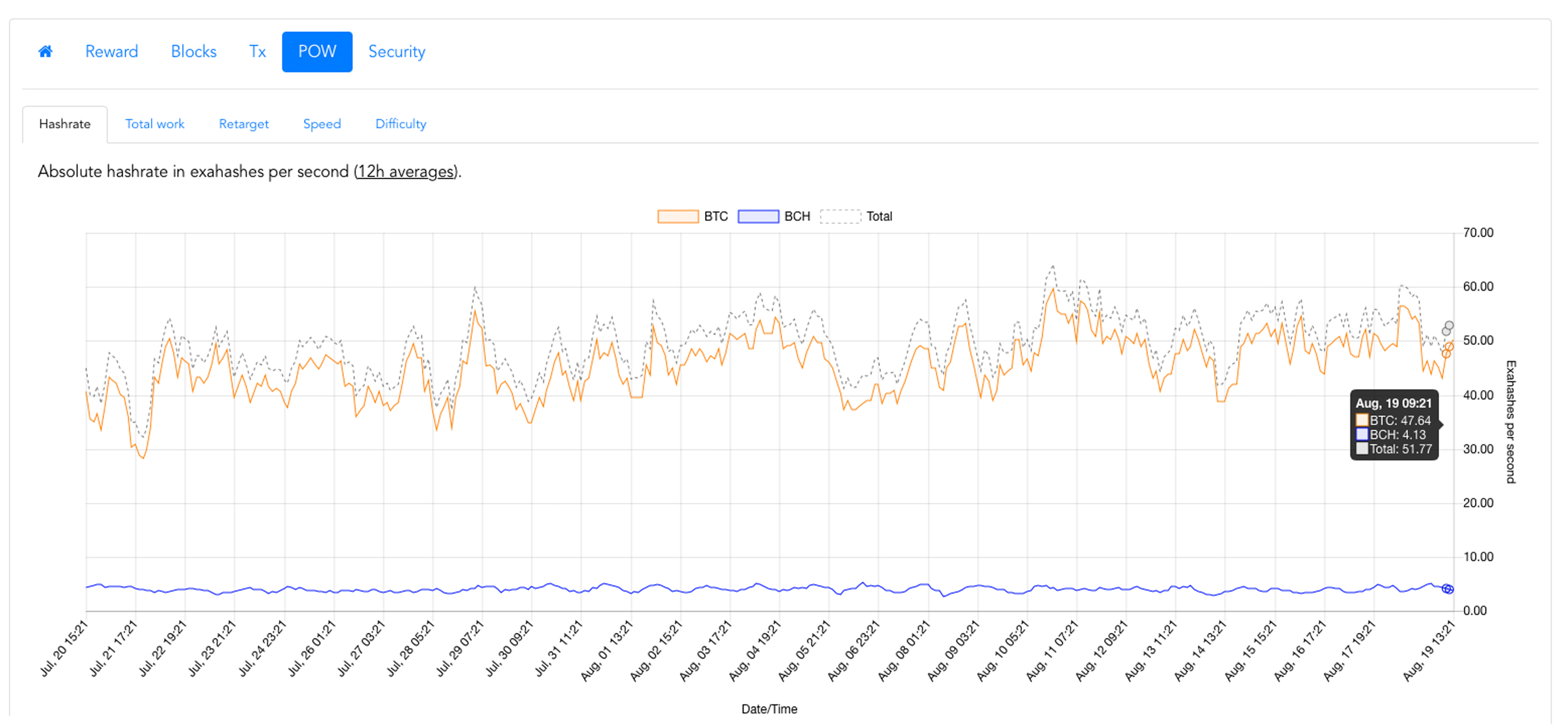
Bitcoin Cash Network Hashrate Has Increased Fourfold in One Year
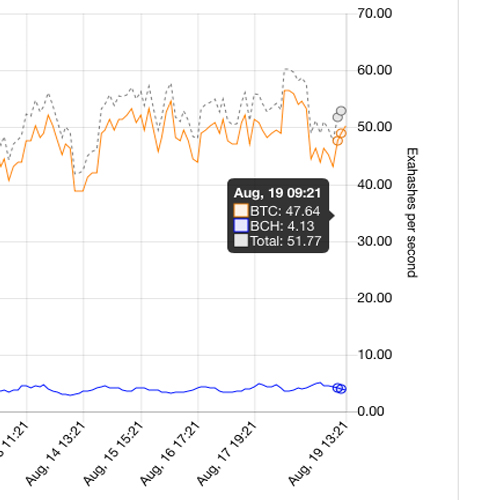
The Bitcoin Cash network at the time of writing is capturing around 4.13 exahashes per second today and over the last seven days, it’s averaged around 4. Right now there’s been over 65,000 BCH blocks mined since August 1, 2017, and the chain is over 6,600 blocks ahead of the bitcoin core (BTC) chain. On Sunday, August 19, 2018, the BCH chain is operating at 9.87 percent of BTC’s sum block difficulty. Since last August the Bitcoin Cash network hashrate has increased remarkably and the amount of mining pools has notably changed as well. For instance, during the first week of August 2017, there were only a few mining pools processing BCH blocks such as Viabtc, Bitcoin.com, an unknown miner from Hong Kong, and a few other unknown miners. Weeks later on August 21 many other miners joined the BCH network such as Bitclub, Antpool, Batpool, and BTC.com bringing the BCH hashpower up to approximately 2 exahash.
A Variety of BCH Mining Pools and New Leaders
Now a year later the BCH network has roughly 13 different mining pools including Coingeek, BMG Pool, Rawpool, BTC.com, Viabtc, Antpool, Bitcoin.com, BTC.top, Sbi Crypto, F2pool, Huobi, and a few unknown pools. Mining power has shifted hands since because twelve months ago the unknown miners and Viabtc commanded a large portion of the BCH hashrate. Now the biggest mining pool over the last seven days is Coingeek with 23.4 percent of the network hashrate over the last week and 31.9 percent today.
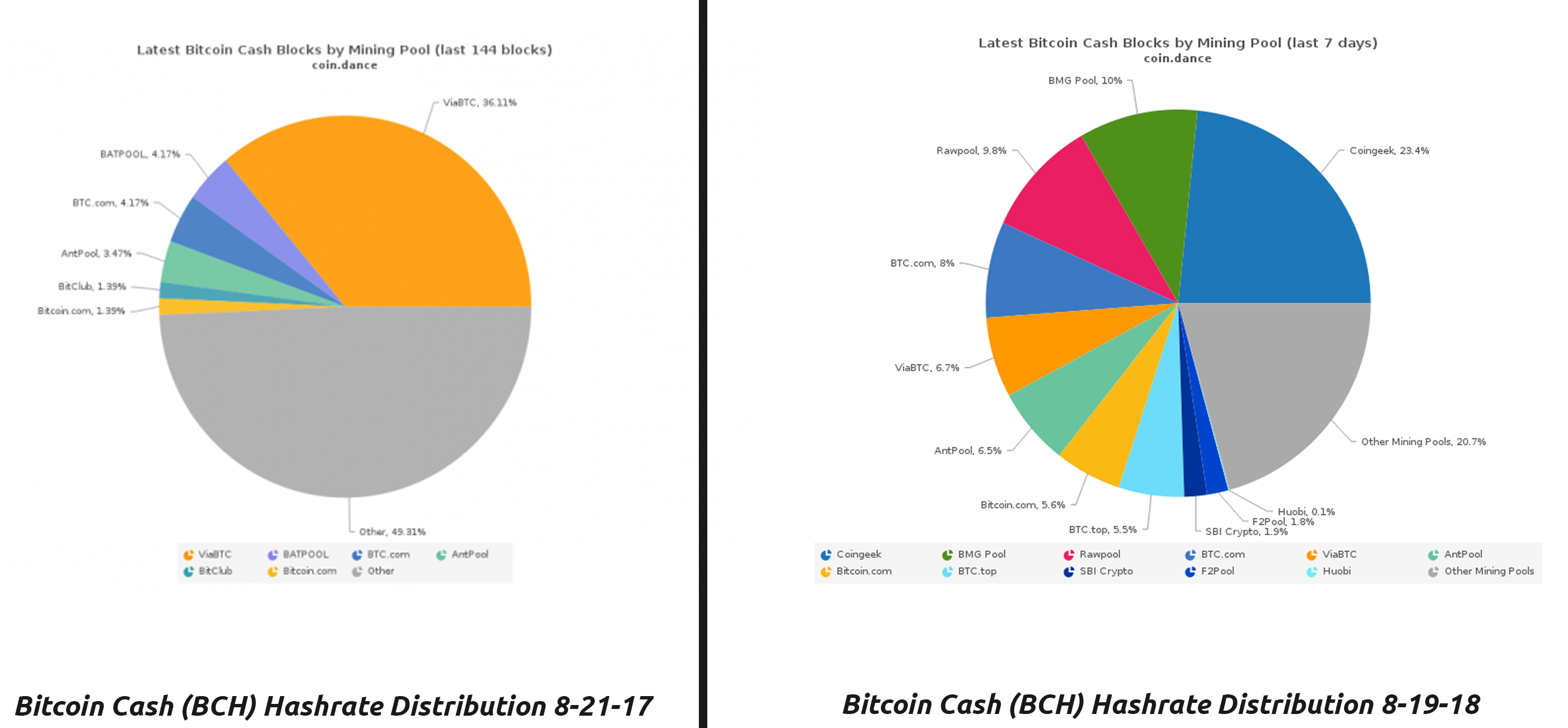
Then there are two to three unknown mining pools (can be differentiated by coinbase data) that hold about 20 percent of the BCH hashpower. The following top BCH miners include BMG Pool (10%), Rawpool (9.8%), BTC.com (8%), Viabtc (6.7%), and Antpool (6.5%). Other pools like F2pool and GMO Group have mined the BCH chain a few times over the past year as well. Essentially since the first week of August 2017, the BCH hashrate has grown fourfold and a lot more miners are processing BCH blocks.
Bitcoin Core Hashrate Climbs to 48 Exahash Per Second
As far as the Bitcoin Core (BTC) network hashpower is concerned a lot has changed since the first 2017’s first week of August. During the second week of August 2017, the BTC hashrate was around 8-6 exahash per second but has since increased 500 percent to around 48.2 exahash per second today. Hashrate distribution has changed quite a bit in the BTC mining world as well as there are now roughly 16 different mining pools. Right now there’s an unknown miner processing 13.3 percent of the BTC network. The top BTC mining pools have also shifted quite a bit with the largest pool being BTC.com (16.6%) followed by pools such as Antpool (14.6%), unknown (13.3%), BTC.top (12.3%), and Slush Pool (11%).
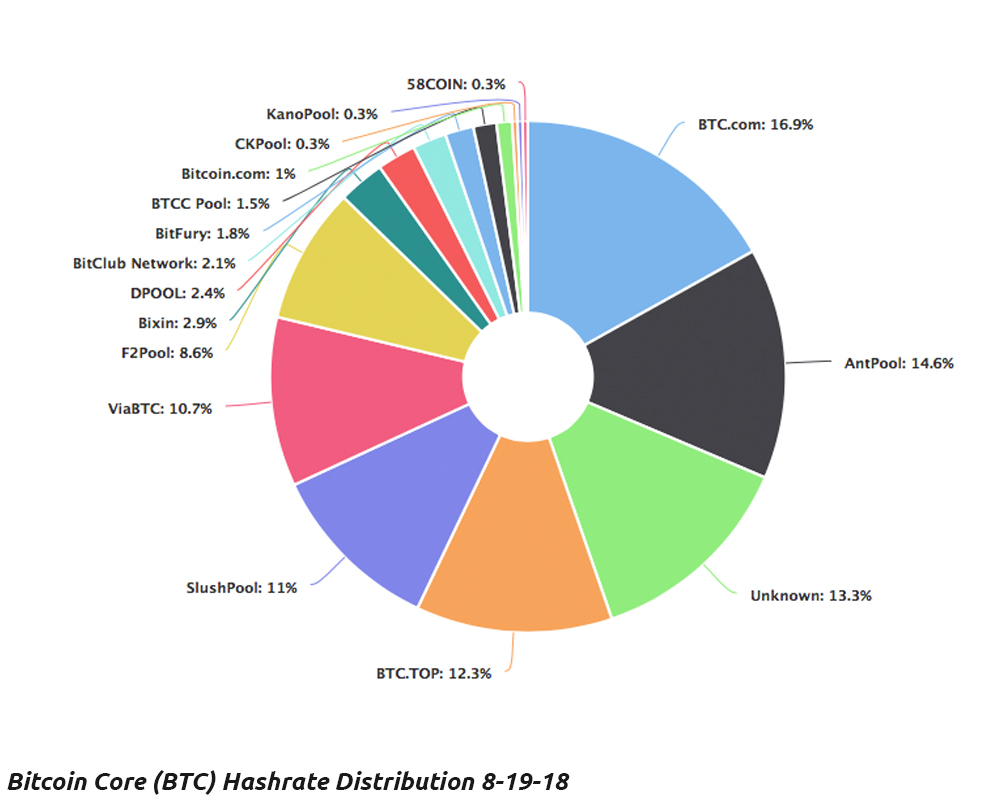
The Use of Overt Asic Boost Touches a High This Month
One particular interesting statistic is the use of overt “version-rolling” Asic Boost on the BTC network has increased since the Blockchain Defensive Patent License (BDPL) initiative was announced this past March. According to statistics, the use of Asic Boost whether overt or covert can increase mining efficiency by 20-30 percent. So far since March, the use of overt Asic Boost had crossed roughly 5 percent of the entire BTC network on August 1, 2018.
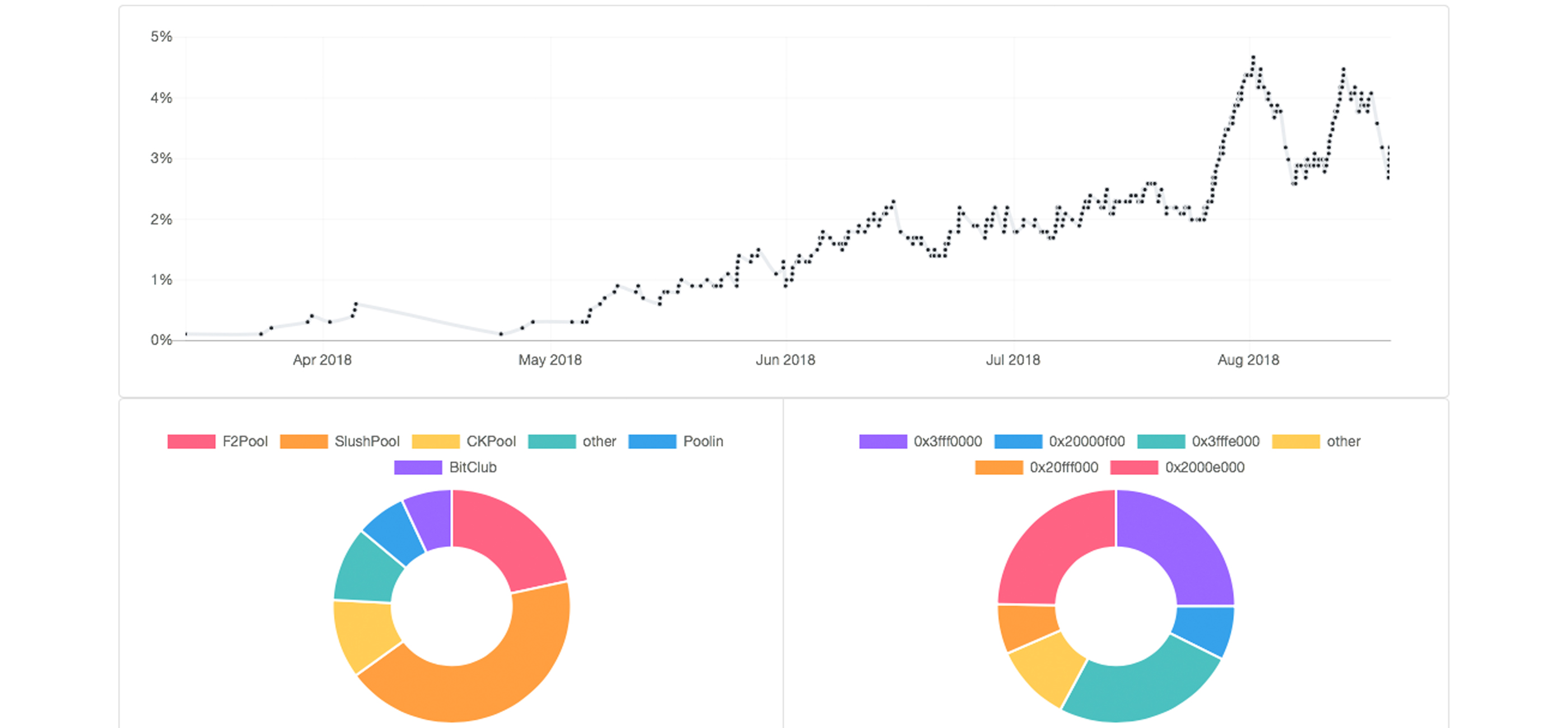
On August 13 the network touch around 4.4 percent of all blocks found with Asic Boost and the average is around 3 percent today. Slush Pool has found the most blocks on the BTC network using overt Asic Boost (40%) while F2pool follows slightly behind (20%). Other mining pools utilizing Asic Boost include Ckpool, Bitclub, Bitfury, Wayi.cn, Poolin, and an unknown miner. The unknown mining pool commands 11 percent of the sum of all overt “version-rolling” Asic Boost blocks found.
The Largest Computational Systems Worldwide Have Pushed Semiconductor Tech Forward
All of this means the power of SHA-256 mining has become one of the most powerful computational systems here on earth and it continues to grow. Further Satoshi’s design to create an incentivized system that processes and verifies transactions has also pushed the envelope when it comes to semiconductor and MOSFET innovation. SHA-256 mining has excelled the creation of 10nm and 7nm chips which were one year behind schedule according to Moore’s Law.
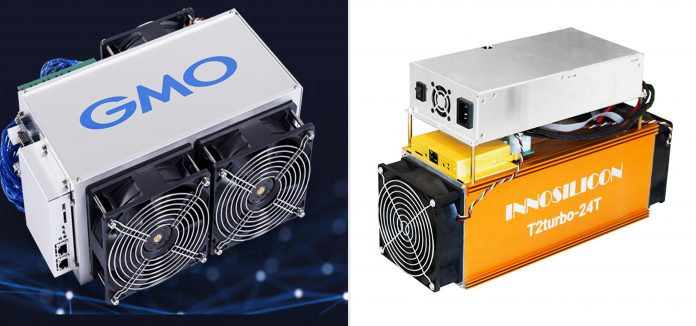
These chips and the firms that have created super powerful mining rigs like GMO’s B3 (33TH/s), Innosilicon’s T2-Turbo (24TH/s), and Canaan’s newly introduced Avalonminer A9 (26.5-30TH/s) should push the overall SHA-256 hashrate even more exponentially. There are only four foundries worldwide that manufacture 7nm chips (Samsung, Intel, TSMC, and Global Foundries) and Satoshi’s creation has bolstered the demand for these innovative chips.
Markets may be bearish this year but the mining industry is growing faster than we can fathom, and the computational power behind Satoshi’s invention proves more powerful than the fiat spot price per coin.
What do you think about this year’s mining statistics continuing to grow stronger while the prices of cryptocurrencies have been floundering? Let us know what you think about this subject in the comment section below.
Images via Shutterstock, Coindance, Blockchain.com charts, Fork.lol, GMO Group, Innosilicon, and Asicboostdance.
At Bitcoin.com there’s a bunch of free helpful services. For instance, have you seen our Tools page? You can even lookup the exchange rate for a transaction in the past. Or calculate the value of your current holdings. Or create a paper wallet. And much more.
The post SHA-256 Mining Hashrate Climbs Significantly in One Year appeared first on Bitcoin News.
Powered by WPeMatico
